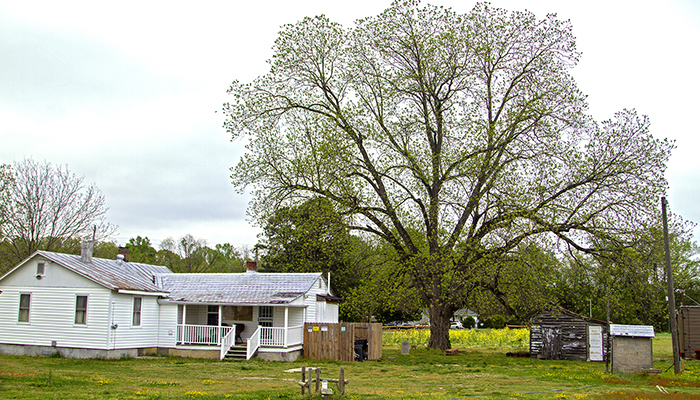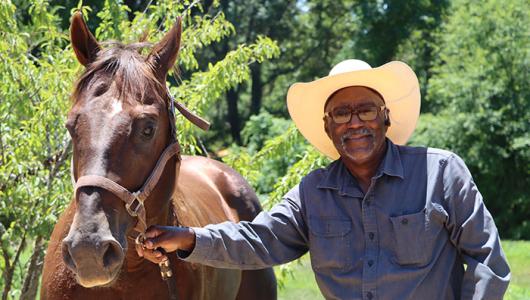Having “the kids” come home to preserve the family farm may be an old story, but the United States Department of Agriculture (USDA) is helping sisters Nita and Neva Mensia write a new version. While neither of the Mensia twins were ever a full-time resident of their grandparents’ farm in Surry County, they both recall it as a spot full of happy memories of weekend and summer days when they were younger. They assisted with the chores while exploring the woods and climbing over the tractors as if they were structures on a playground.

“It was our special spot,” said Nita. “By the time we inherited it, though, it needed some help.”
When their grandparents, William and Naomi Winfield, grew too old to operate the farm, they began leasing their acreage to renters, who let the condition of the property deteriorate.
“Restoring soil health was and is our first priority. [The soil] had been neglected for a long time by the renters, who grew only one crop (soybeans) and weren’t really concerned with the long term. When I saw the place after being away for a few years, my first thought was, we could start another Dust Bowl right here.”
Nina and Neva inherited three parcels totaling about 100 acres and weren’t sure what to do with it all initially. But they were open to suggestions.
In need of both advice and assistance, Nita and Neva turned to the USDA Service Center in Smithfield, where they got to know District Conservationist Jake Browder of the Natural Resources Conservation Service (NRCS).
Thanks to the Inflation Reduction Act, which recently boosted federal funding for some mitigation activities, Jake was in a better position to provide them financial assistance than he would have been in the past. The Inflation Reduction Act provides an additional $19.5 billion for NRCS to deliver financial and technical assistance to producers for certain mitigation activities through existing USDA conservation programs.

“[Nita and Neva] were unusual applicants,” Jake said, “because they could be unusually flexible. They had ideas but hadn’t locked themselves into any one plan.”
In consultation with Jake, they ultimately decided on a multi-level approach that will repurpose some of their property as forest land, while other sections will be used to grow specialty crops. They received a contract for tree and shrub establishment, an activity eligible for Inflation Reduction Act funding.
Touring the farm with the sisters, they’re happy to identify areas that will eventually be groves of black walnut or pine trees. Today, these trees are just seedlings. In addition to their important role in storing carbon, trees and shrubs were planted to also increase biodiversity and create a more welcoming habitat for local wildlife.
“Funding from the [Inflation Reduction Act] will help us reach our goals sooner,” Nita said. “The support, advice and attitude of partnership we’ve received from NRCS…has been and remains instrumental in our ability to eventually make the farm self-sufficient and sustainable for the next generation.”

Some of the sisters’ goals are still literally on the drawing board. The farm’s current physical landmark, an immense pecan tree, believed to be more than 200 years old, is the planned centerpiece of a pecan production operation that will include storage and processing buildings.
“They’re still in the early stages,” Jake said, “but you wouldn’t believe the difference in this property between now and last year at this time. A year from now, I think you’ll see even bigger changes. They have great goals and they’re on their way.”
The sisters also have an immediate goal of making high-quality food more available in inner-city markets. They have an agreement with the Black Church Food Security Network that could see some of their produce on neighborhood shelves this summer.
“Sustainable and regenerative farming is about more than soil health,” Nita said. “It’s about the financial health of the farmers, too. USDA programs make it possible to rebuild our agricultural infrastructure and to bring old farms back to life. For us, they’ve been a godsend.”
Jeff Blakely is a public affairs specialist for NRCS in Virginia.


